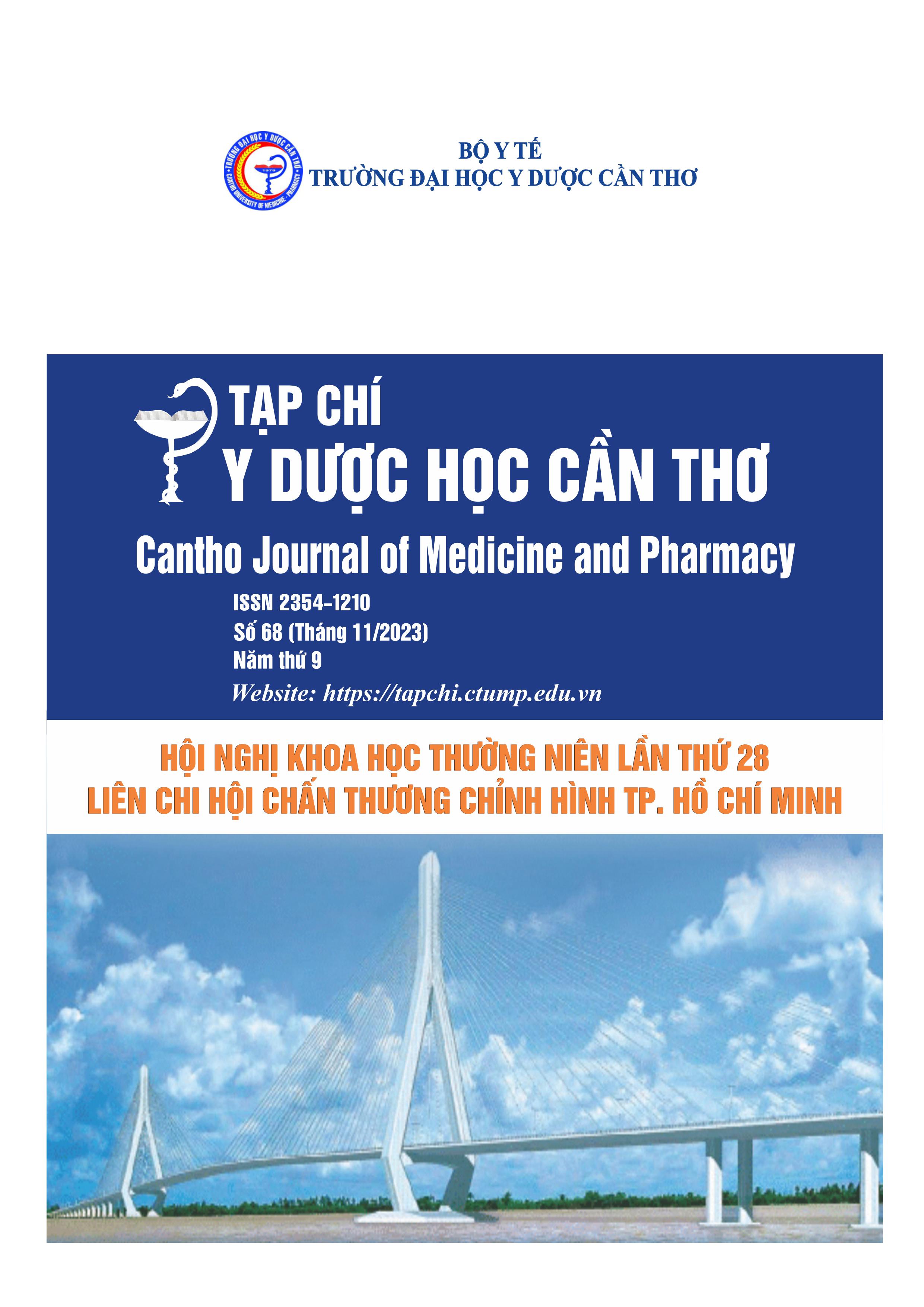ANATOMICAL REMNANT PRESERVING POSTERIOR CRUCIATE LIGAMENT RECONSTRUCTION USING AN INTERCRUCIATE TRANS-SEPTAL APPROACH
Main Article Content
Abstract
Posterior cruciate ligament (PCL) injury usually remain the remnant, both tibial and femoral footprint. PCL reconstruction with remnant preservation demonstrated satisfactory outcomes, better grafted tendon healing. In addition, anatomic PCL reconstruction is a key factor in achieving better outcome. However, the surgeon needs to be able to access the posterior compartment of the knee joint. Ahn introduced the trans-septal technique to enter the posterior compartment, but it is not easy to do. Bancha modified this technique by using the intercruciate ligament approach. The posterior trans-septal portal provides an exactly visualization the PCL attachment, so the PCL graft can be put in an anatomic position.
Article Details
Keywords
Posterior cruciate ligament, ligament reconstruction, posterior compartment, inter-cruciate ligament.
References
10.1053/jars.2003.50017.
2. Nicodeme, J.D., C. Löcherbach, and B.M. Jolles, Tibial tunnel placement in posterior cruciate ligament reconstruction: a systematic review. Knee Surgery, Sports Traumatology, Arthroscopy, 2014. 22(7): 1556-1562. DOI: 10.1007/s00167-013-2563-3.
3. Chernchujit, B., L.J. Loong, and S. Chaudhari, Intercruciate trans-septal arthroscopic approach to the posterior compartment of the knee joint. J isakos, 2023. DOI:
10.1016/j.jisako.2023.07.004.
4. Lee, D.W., et al., Clinical, Functional, and Morphological Evaluations of Posterior Cruciate Ligament Reconstruction With Remnant Preservation: Minimum 2-Year Follow-up. The American Journal of Sports Medicine, 2014. 42(8): 1822-1831. DOI: 10.1177/0363546514536680.
5. D’Ambrosi, R., A. Hallé, and A. Hardy, Good clinical and radiological results following remnant-preserving posterior cruciate ligament reconstruction: a systematic review. Knee Surgery, Sports Traumatology, Arthroscopy, 2023. 31(6): 2418-2432. DOI: 10.1007/s00167022-07192-z.
6. Rhatomy, S., et al., Knee Laxity or Loss of Knee Range of Motion after PCL Reconstruction: A Systematic Review and Meta-Analysis. Annals of Applied Sport Science, 2020. 8: 1-24. DOI:
10.29252/aassjournal.938.
7. James, E.W., C.E. Taber, and R.G. Marx, Complications Associated with Posterior Cruciate Ligament Reconstruction and Avoiding Them. J Knee Surg, 2021. 34(6): 587-591. DOI: 10.1055/s-0041-1723016.
8. Ahn, J.H., et al., Increasing the distance between the posterior cruciate ligament and the popliteal neurovascular bundle by a limited posterior capsular release during arthroscopic transtibial posterior cruciate ligament reconstruction: a cadaveric angiographic study. Am J Sports Med, 2007. 35(5): 787-92. DOI: 10.1177/0363546506297908.


